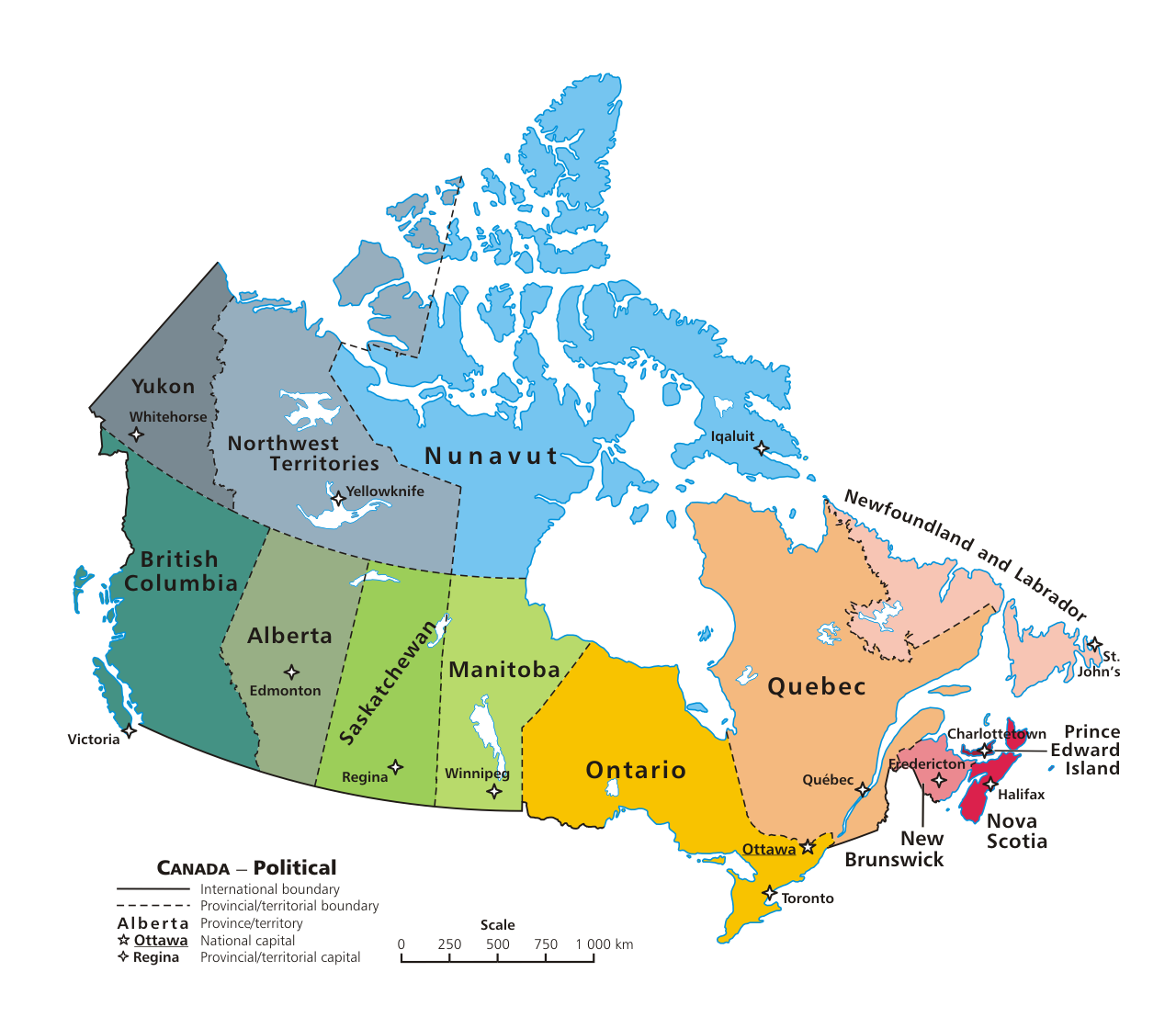- Provinces and territories of Canada
The provinces and territories of
Canada combine to make up the world's second largest country in total area. The major difference between a Canadian province and a territory is that a province receives its power and authority directly from the Crown, via theConstitution Act, 1867 , whereas territories derive their mandates from the federal government.The current provinces are
Alberta ,British Columbia ,Manitoba ,New Brunswick ,Newfoundland and Labrador ,Nova Scotia ,Ontario ,Prince Edward Island ,Quebec , andSaskatchewan . The three territories areNorthwest Territories ,Nunavut , andYukon .Provinces
The following table is listed in the order of precedence (i.e. when a province entered into Confederation).
* Quebec, Nova Scotia, New Brunswick, Manitoba, Newfoundland, and Prince Edward Island historically hadLegislative Council s, analogous to the federal Senate.Each of the territories elects one
Member of Parliament . Canadian territories are each entitled to elect one full voting representative to theCanadian House of Commons . With the sole exception of Prince Edward Island having slightly greaterper capita representation than the Northwest Territories, every territory has considerably greater per capita representation in the Commons than every other province. Residents of the Canadian territories are full citizens and enjoy the same rights as all other Canadians. Each territory also has one Senator.Provincial parties
Most provinces have provincial counterparts to the three national federal parties. However, some provincial parties are not formally linked to the federal parties that share the same name. The
New Democratic Party is the only party that has integrated membership between the provincial and federal wings. Some provinces have regional political parties, such as theSaskatchewan Party .The provincial political climate of Quebec is quite different: the main split is between sovereignty (of which
separatism is generally held to be one strain), represented by theParti Québécois , and federalism, represented primarily by theQuebec Liberal Party . Since 2007, theOfficial Opposition has been theAction Démocratique du Québec , which advocates what it calls "autonomy", a middle-of-the-road option supporting localized power in the Federal structure. They have no corresponding Federal party, but polls show their base to align with the FederalConservative Party of Canada .The provincial Progressive Conservative parties are also now separate from the federal Conservative Party, which resulted from a merger between the Progressive Conservatives and the Canadian Alliance. Historically and currently, the Canadian provincial and federal political party evolution is somewhat flexible. Provincial political parties are more stable than Canadian federal political parties.
Other
The
Canadian National Vimy Memorial , nearVimy ,Pas-de-Calais département,France , is ceremonially considered Canadian territory. In 1922 the French government donated "freely, and for all time, to the Government of Canada the free use of the land exempt from all taxes". [cite web
title = Design and Construction of the Vimy Ridge Memorial
publisher = Veteran Affairs Canada
date = August 8, 1998
url = http://www.vac-acc.gc.ca/remembers/sub.cfm?source=Memorials/ww1mem/Vimy/vmemory#one
accessdate = 2007-07-20 ] However, unlikediplomatic missions it does not enjoy extraterritorial status and is thus subject to French law.In the past, there has been interest in both Canada and the
Turks and Caicos Islands , an overseas UK territory in theCaribbean , for the latter to enter Confederation in some capacity. While no official negotiations are underway, the two have a long-standing relationship and politicians on both sides have actively explored the circumstances under which a political union could be achieved. [Cite web| url = http://www.cbc.ca/news/background/turksandcaicos/|title=Canada's Caribbean ambition| author=CBC News| authorlink=Canadian Broadcasting Corporation|accessdate=2007-01-27]ee also
*
West Indies Federation
*Canadian provincial name etymologies References
:*Bumsted, J. (2004). "History of the Canadian Peoples", Oxford: Oxford University Press (ISBN 0-19-541688-0):*
Statistics Canada ndash [http://statcan.ca/l01/cst01/demo31a.htm Population by province and territory, by sex and age group,] :*Canada Onlinendash [http://canadaonline.about.com/od/governmentorgprov/ Provincial Government Organization]
Wikimedia Foundation. 2010.

